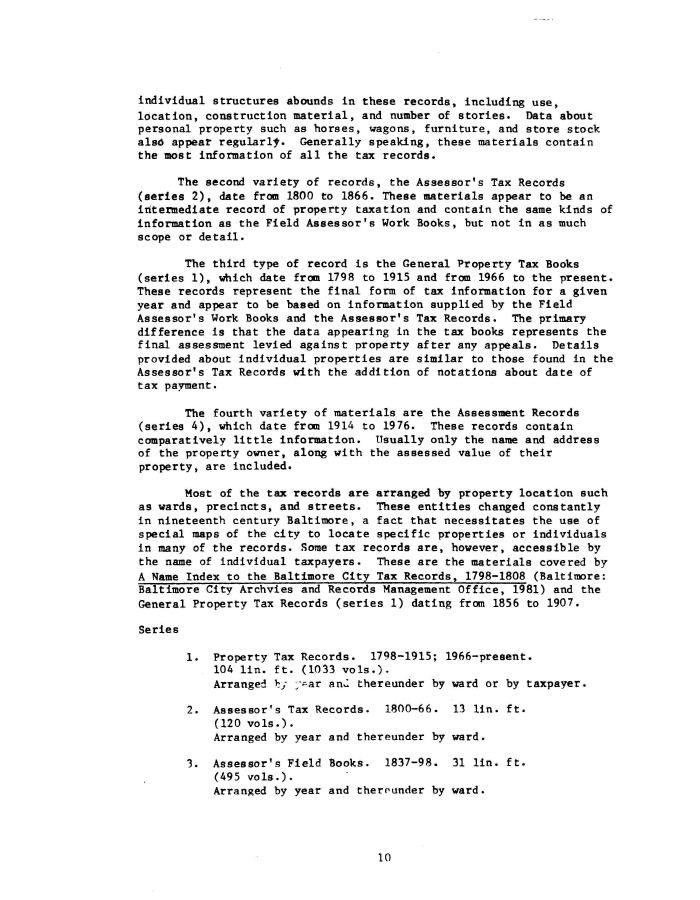|
individual structures abounds in these records, including use,
location, construction material, and number of stories. Data about
personal property such as horses, wagons, furniture, and store stock
alsd appear regularly. Generally speaking, these materials contain
the most information of all the tax records.
The second variety of records, the Assessor's Tax Records
(series 2), date from 1800 to 1866. These materials appear to be an
intermediate record of property taxation and contain the same kinds of
information as the Field Assessor's Work Books, but not in as much
scope or detail.
The third type of record is the General Property Tax Books
(series 1), which date from 1798 to 1915 and from 1966 to the present.
These records represent the final form of tax information for a given
year and appear to be based on information supplied by the Field
Assessor's Work Books and the Assessor's Tax Records. The primary
difference is that the data appearing in the tax books represents the
final assessment levied against property after any appeals. Details
provided about individual properties are similar to those found in the
Assessor's Tax Records with the addition of notations about date of
tax payment.
The fourth variety of materials are the Assessment Records
(series 4), which date from 1914 to 1976. These records contain
comparatively little information. Usually only the name and address
of the property owner, along with the assessed value of their
property, are included.
Most of the tax records are arranged by property location such
as wards, precincts, and streets. These entities changed constantly
in nineteenth century Baltimore, a fact that necessitates the use of
special maps of the city to locate specific properties or individuals
in many of the records. Some tax records are, however, accessible by
the name of individual taxpayers. These are the materials covered by
A Name Index to the Baltimore City Tax Records, 1798-1808 (Baltimore:
Baltimore City Archvies and Records Management Office, 1981) and the
General Property Tax Records (series 1) dating from 1856 to 1907.
Series
1. Property Tax Records. 1798-1915; 1966-present.
104 lin. ft. (1033 vols.).
Arranged V/ /^ar an^l thereunder by ward or by taxpayer
2. Assessor's Tax Records. 1800-66. 13 lin. ft.
(120 vols.).
Arranged by year and thereunder by ward.
3. Assessor's Field Books. 1837-98. 31 lin. ft.
(495 vols.).
Arranged by year and therounder by ward.
10
|

